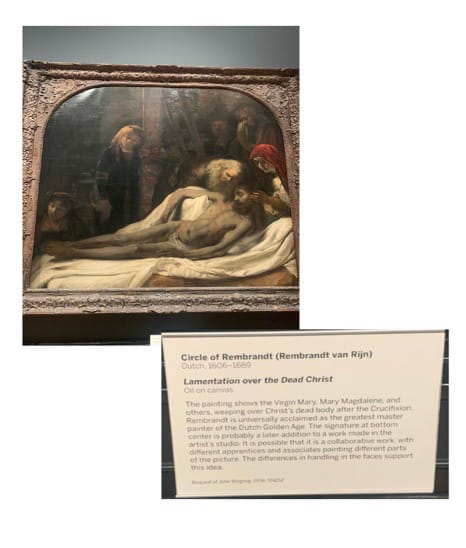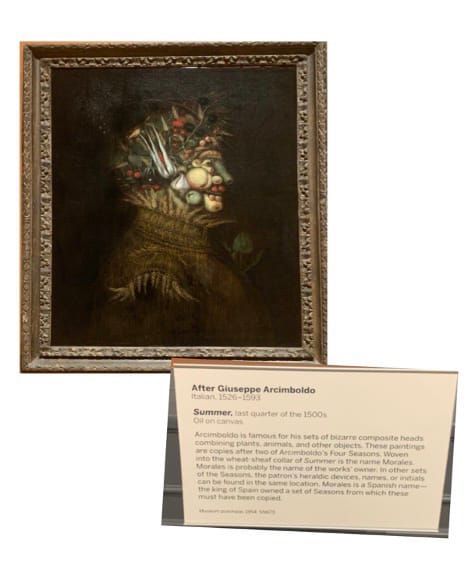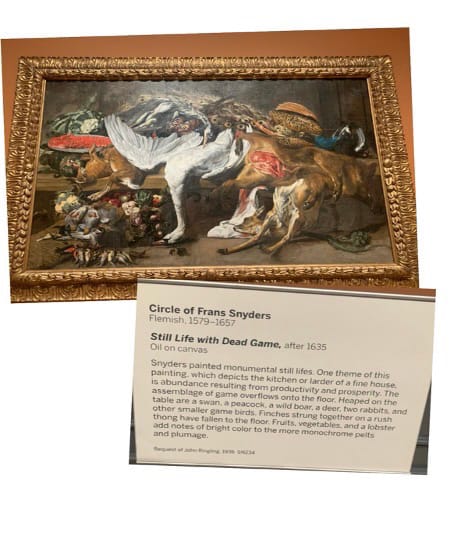The human mind is curious to know about multiple objects and get information regarding numerous things. This unique feature urges humanity to meet the thirst for knowledge. This thirst usually gains water in classrooms, laboratories, intensive workshops, and various trips to multiple locations and sites. These are essential features of modern corridors of knowledge around the globe (Jose et al.). Such a wonderful and knowledgeable trip lavished our minds and souls with the destination to a museum.
The building of the museum was marvelous, with plenty of masterpiece paintings by various artists of different eras. Multiple works of masterpieces depict different themes with such beauty and elegance that every time paintings reveal a new aspect; one looks at them. The respective paintings portray new beauties and excellences with unique and versatile aesthetic values with every new look. Most of the paintings belong to joints of the world of artists with a variety of painting techniques. The large numbers of paintings were in the “oil on canvas work” category. I cherished myself in this knowledgeable environment with multiple paintings I liked the most, and my soul resonated with an incredible appeal of learning about them.
However, the most cherish able painting piece was “Lamentation over the Dead Christ.” The painting was a vivid devotion of the artist with a compositional scheme. It portrayed a scene where the Virgin Marry and other personals are gathered around the dead body of Christ after the crucifixion. Biffis argued that the lamentation of Christ was the most common subject portrayed by multiple artists of the high middle ages. In the present painting, it was the tragic scene where the painter depicted the grief and sorrow of respective persons. The painting portrays the death scenario with oil on the canvas having a beautiful color combination. It seems that the artist used the foreshortening technique in this masterpiece, creating the illusion of the object in accordance with the background. The body getting prepared for burial looks in compressed stature in painting, i.e., appearing shorter than the reality of the said object.
Furthermore, the said painting was made by the legend artists Rembrandt Harmenszoon van Rijn (1606-1669). Rijn was a renowned Dutch artist usually famous for the most significant visual artworks. He used to depict a massive range of subject matters as well as multiple styles through his artwork. His work depicts historical events to landscapes portraits, mythological themes to biblical subjects, along with genre scenes and animal depiction. His portraits from the bible and biblical topics are considered as his great creativities. He belonged to the “Dutch Golden Age Baroque” movement. His masterpiece works include magnificent paintings like Self-Portraits, the Anatomy Lesson of Dr. Nicolaes Tulp, Belshazzar’s Feast, the Night Watch, Bathsheba at her Bath, the Hundred Guilder Print, and Syndics of the Drapers’Guild (Dekker et al.).
Similarly, another wonderful painting in the museum was Summer, Last Quarters of the 1500s. It was a marvelous piece of artwork and also made with oil on the canvas. Spratt concluded that the beauty and attraction of this still portrait lie with its versatile objects combined in one place. The painting depicts multiple visual fascinations with each look on its sight. It is a combination of plants, animals, and other objects to formulate a human portrait. It looks at first sight that artists depicted the effect of seasons on plants, but the attraction point transforms to animals instead of plants in the next moment. The beauty of the painting was non-static and non-still object depiction on still art with multiple color combinations. It is a masterpiece with a characterization of seasons’ effects on numerous objects, ultimately transforming into humans. It depicts the final destination of each object towards the service of humanity. It is considered a curious painting of Giuseppe Arcimboldo with absolute uniqueness.
However, Giuseppe Arcimboldo (1527-1593) was an Italian painter who was famous for creating imaginative heads using multiple objects like fruits, vegetables, fish, various flowers, and different portions of plants and books, and sea life. Arcimboldo portrayed still life portraits with different objects and multiple colors. His notable creative masterpieces included various paintings like the Librarian, Ventumnus, Flora Ca., and Four Elements, etc. His multiple religious and non-religious paintings are considered the best ones for having various themes according to viewers’ understanding (Spratt).
Furthermore, another painting that attracted attention was Still Life with Dead Games by Frans Snyders. It is marvelous work that is also created with oil on canvas. The painting portrays many kitchen items and daily use objects heaped on the ground with no movement clues. The color combination and the large number of objects collected in one place give this painting uniqueness. It is a combination of living objects like rabbits, deer, and smaller birds with non-living objects. It looks like the artist wants to depict life and the absence of life at the same point and place. The brighter colors, along with plumage work, made it a superb piece of art.
Moreover, Frans Snyders (1579-1657) was a sixteenth-century painter renowned for his unique animal paintings. His most of painting depict hunting scenes of animals as well as the combination of animals and humans having competition for life. Snyders was a leading Antwerp artist, having worked in collaboration with his contemporaries. Other than animals, he depicted multiple objects showing still life, like kitchen and Bazar items with various angles and mainly in the heaved form (Wheelock).
Meanwhile, the trip was an ambitious source of knowledge to look at the great work of legendary artists and an immense source of learning new things.
Work Cited
Biffis, Mattia. “Francesco Salviati’s Lamentation for Venice and the Origins of the Disegno/Colorito Debate.” Zeitschrift für Kunstgeschichte 84.2 (2021): 201-219.
Dekker, Nikki den, Erik Hinterding, and Lidewij de Koekkoek. “Rembrandt en Jan Six.” (2017).
Jose, Sara, Patricia G. Patrick, and Christine Moseley. “Experiential learning theory: the importance of outdoor classrooms in environmental education.” International Journal of Science Education, Part B 7.3 (2017): 269-284.
Spratt, Emily L. “Gastronomic Algorithms: Artistic and Sensory Exploration of Alain Passard’s Michelin Plates in the Manner of Giuseppe Arcimboldo with GANs.” Leonardo (2021): 1-11.
Wheelock Jr, Arthur K. “Pieter Brueghel the Younger (Brussels 1564/65–1637/38 Antwerp).” (2020).








